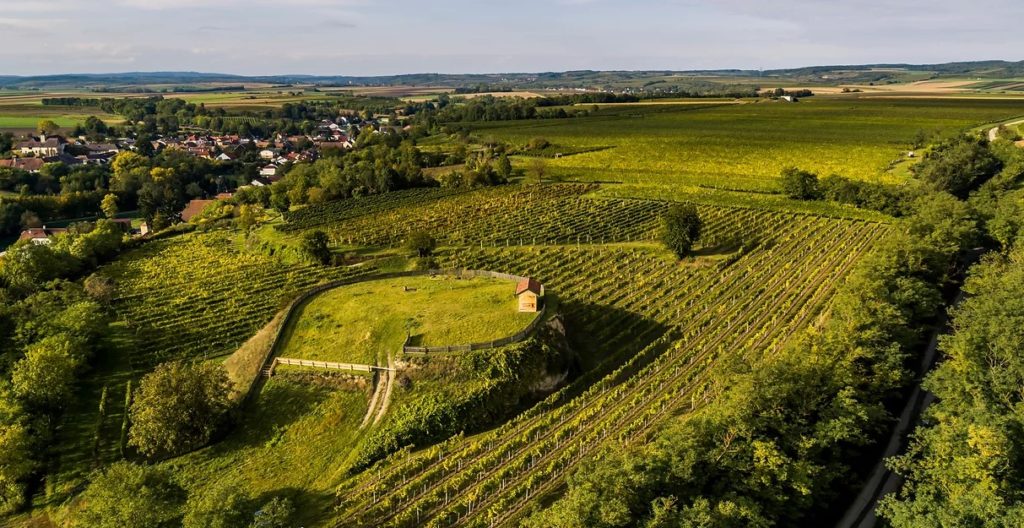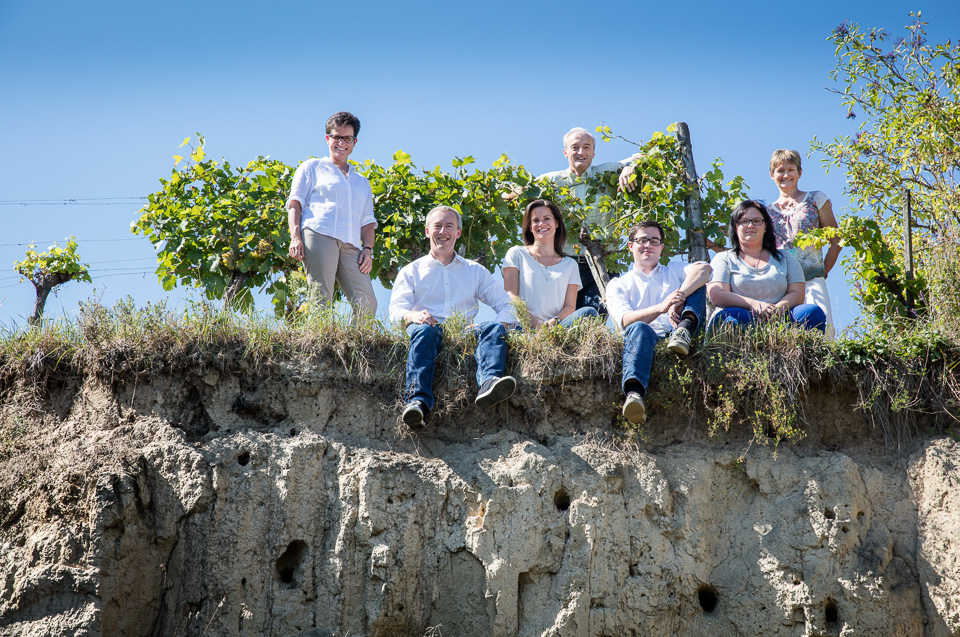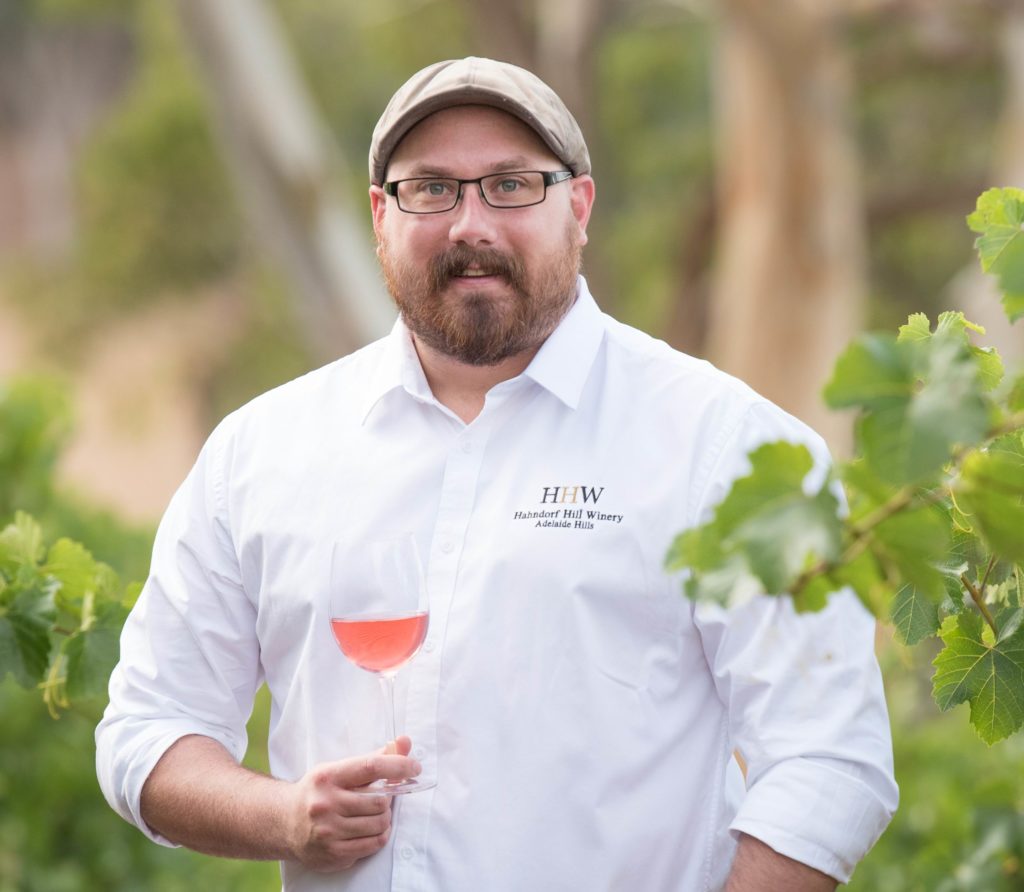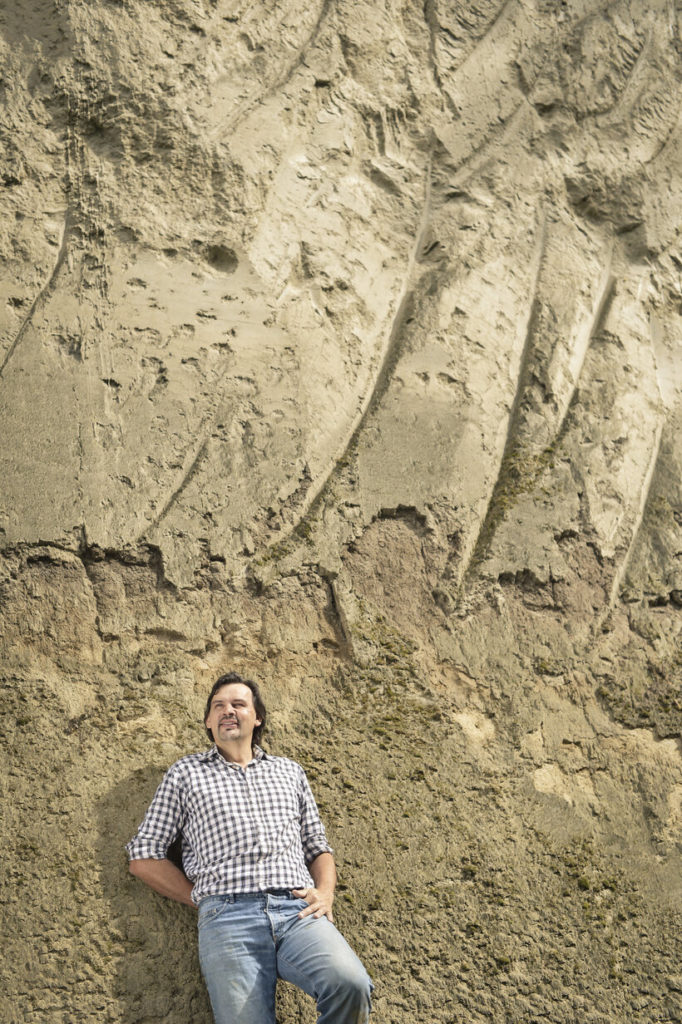Whilst putting together a map of Austria’s wine producing regions for a recent Hahndorf Hill cellar door staff training session, I was confronted with a glaring gap in my own training. I have spent years studying the wines, wineries, regions and framework that have seen Austria’s star rise on the global wine stage, but it appears that along with many international observers and lovers of Austrian wine, I have inadvertently led you along the path often travelled.
Together we have sipped Gruner Veltliners of gravity and majesty from the Wachau’s prestigious terraced slopes, felt the warm wind on Burgenland’s rolling plains with Blaufrankisch in hand, and gazed across the city of Vienna from its lush and verdant halo of hillsides with a glass of Gemischter Satz. We have even walked the backstreets and laneways with some of the plucky and grossly underestimated producers of the Weinviertel. How then is it possible that I have overlooked a region smack bang in the middle of the viticultural action? Let us remedy this inexcusable oversight and delve into the Wagram.
In 2007 the region previously known as Donauland was formally rechristened as Wagram (pronounced Vaag-rum). This name change was just one notable event in the region’s extremely long history, so long in fact it is home to Austria’s oldest winery. In 2014 Stift Klosterneuburg (aka Klosterneuburg Monastery) celebrated its 900th birthday. Its foundation in the year 1114 would in time establish the area as a viticultural centre, a responsibility which the monastery has taken very seriously ever since. Many of Austria’s winemakers studied here in the world’s oldest viticultural school which was founded in 1860, and Klosterneuburg is also the home of the rare Austrian red varietal, Saint Laurent.
To the immediate north east of Vienna, the Wagram shares several of the geological, topographical and climatic features so prized by its higher profile Danubian neighbours, but it also has an extra ace up its sleeve: The Wagram region is home to Europe’s greatest accumulation of fabled loess soil.
The region is split down the middle by the Danube River; its northern half borders the Kamptal and shares its signature deposits of loess which were blown in during the last Ice Age. This thick layer has compacted atop the rocky bed of a primordial sea. Wagram actually comes from the word ‘Wogenrain’ which can be roughly translated to ‘Surfside’. Gruner Veltliner is king here and the loess-rich slopes produce wines of spice, texture and exceptional aromatics.
To the south of the Danube, the incline increases and so the soils are dominated by calcareous flysch which is a repetitive layering of silt, sand and argillaceous stone. These layers were created by mudslides deep below the surface of the prehistoric ocean that once covered this area. When paired with the largely predictable climate, these soil types are especially accommodating to St Laurent and Pinot Noir.
So now we have established that the Wagram has everything it needs to make great wines; its two distinctly different terroirs are perfect for a range of Austria’s hero varietals. The Wagram is also immediately adjacent to the country’s most famous wine regions as well as to Vienna, and it carries aeons of viticultural practice. As of writing this article, examples of Wagram red wines are almost impossible to source in Australia; however, we are fortunate enough to have two Wagram Gruner Veltliners on hand.
Karl Fritsch of Weinberghof Fritsch is very conscious of his time and place; a commitment to nurturing the right variety in the right place as well as a dedication to sustainability, is his legacy to future generations. One of the earliest proponents for biodynamic production, Karl became a founding member of the region’s movement which is now formally recognised as ‘Respekt-BIODYN’. His base in the village of Kirchberg in the northern half of the region is blessed by a deep layer of Gruner-loving loess and the ÖTW recognised Ried Schlossberg sits in an especially pretty spot. Sloping southwards away from the ruins of the Winkelberg Castle, this exceptional single vineyard of Gruner Veltliner sits upon pure loess and has a reputation for producing full-bodied and spicy wines.
Had I tried blind the 2017 Gruner Veltliner from the single vineyard Ried Schlossberg, I could have very easily talked myself in and out of a conclusion a dozen times. Its first impression is of the white pepper spice and the apple orchard characteristics typical of elite Kamptal wines; an alluring palate of almond, cashew and yellow stonefruit of the Wachau joined in; and the acid and tannin familiar to lovers of Vienna Gemischter Satz framed out the whole package. This is, of course, not due to any identity crisis within the wine, but rather a symptom of my having allowed such a gap in my own experience to manifest.

This wine has expertly made the very best of its homeground advantage; there are several forces at work on this particular site, any one or two of which would be a boon in any other region, but to have such a confluence of blessings in one place is unfair in the extreme. That being said, Weinberghof Fritsch has walked the walk when it comes to integrity in both the vineyard and winery. I am very confident the philosophies that have delivered such a delicious wine to my table are rock solid and will continue to delight drinkers for generations to come.

Just a few kilometres to the west lies the village of Fels; loess is still the predominant soil feature but the landscape levels out slightly and is more rolling. The Leth family run 100 acres of vineyards, half of which is Gruner Veltliner. Keeping close to nature and making minimal intervention and natural wines are core to this family’s success. They produce several distinct ranges which cover the fresh and friendly styles through to their elite ÖTW recognised single-vineyard wines.
The 2017 Leth Gruner Veltliner from the single site named Ried Scheiben is different from the Fritsch in several ways, but it has in common a few key features that I suspect the locals take particular pride in. Whilst this wine has a healthy dose of palate-hugging lees, it also has an acid and tannin structure that balance it out perfectly. White blossom and peppery white spice are complemented with tart pineapple and crisp minerality. This wine has incredible length and will reward a patient drinker who will re-visit it over several days.
The Wagram is at the nexus of several wine giants; they have carved out for themselves a niche of land that is exceptionally well positioned to take advantage of all the elements that the big boys pride themselves on, but they have so far managed to avoid the politics or pressures that often comes with profile.
I am a firm believer in sub-conscious predisposition; we are hard-wired to categorise and compartmentalise and when confronted with something that pulls at a thread of our understanding of something we value, we are faced with a decision: Let confusion warp into dismissal or lean into it. For a fleeting moment both of these wines tasted like old friends, but they quickly asserted themselves as something unfamiliar and became a great discovery. I chose to make some new friends today and I am sure we will get along famously.
Prost, Jack.



